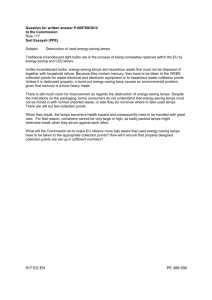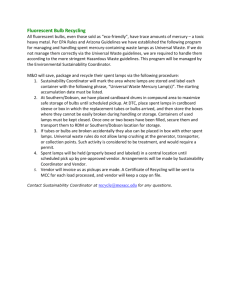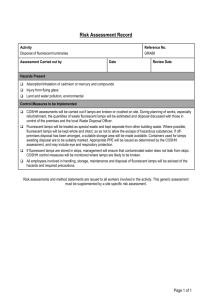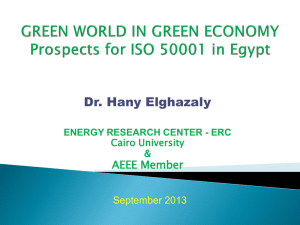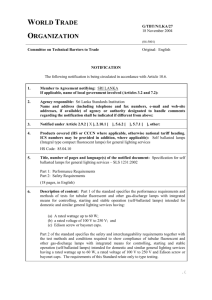POLITICIANS ARE ADVOCATING `ENERGY SAVING
advertisement
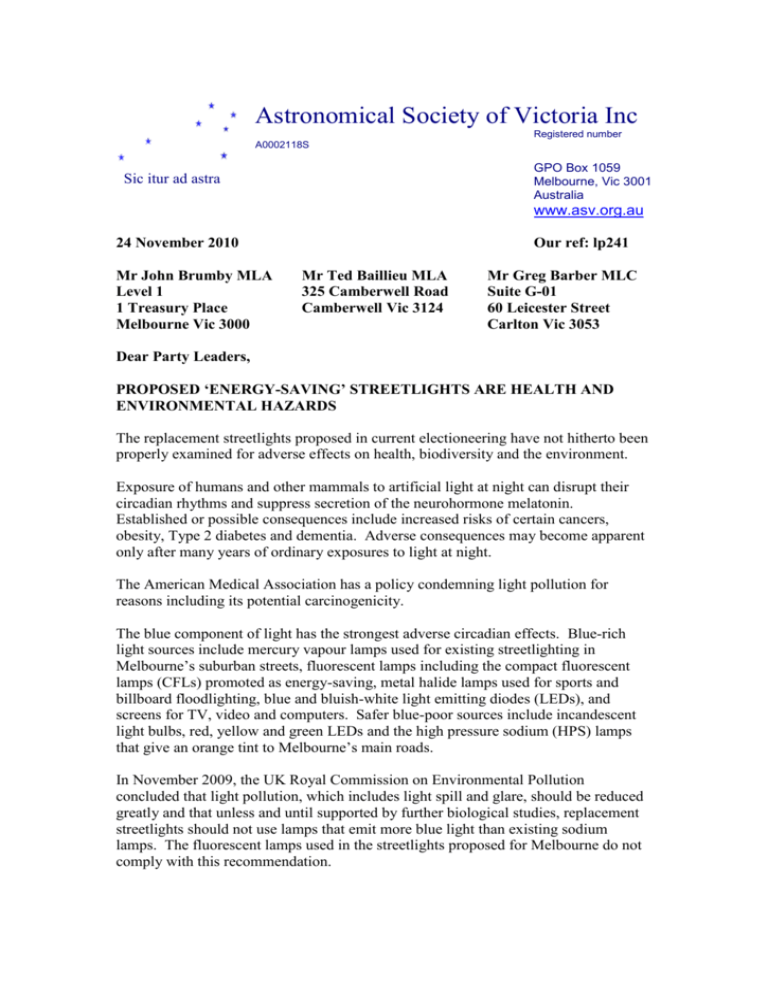
Astronomical Society of Victoria Inc Registered number A0002118S GPO Box 1059 Melbourne, Vic 3001 Australia Sic itur ad astra www.asv.org.au 24 November 2010 Mr John Brumby MLA Level 1 1 Treasury Place Melbourne Vic 3000 Our ref: lp241 Mr Ted Baillieu MLA 325 Camberwell Road Camberwell Vic 3124 Mr Greg Barber MLC Suite G-01 60 Leicester Street Carlton Vic 3053 Dear Party Leaders, PROPOSED ‘ENERGY-SAVING’ STREETLIGHTS ARE HEALTH AND ENVIRONMENTAL HAZARDS The replacement streetlights proposed in current electioneering have not hitherto been properly examined for adverse effects on health, biodiversity and the environment. Exposure of humans and other mammals to artificial light at night can disrupt their circadian rhythms and suppress secretion of the neurohormone melatonin. Established or possible consequences include increased risks of certain cancers, obesity, Type 2 diabetes and dementia. Adverse consequences may become apparent only after many years of ordinary exposures to light at night. The American Medical Association has a policy condemning light pollution for reasons including its potential carcinogenicity. The blue component of light has the strongest adverse circadian effects. Blue-rich light sources include mercury vapour lamps used for existing streetlighting in Melbourne’s suburban streets, fluorescent lamps including the compact fluorescent lamps (CFLs) promoted as energy-saving, metal halide lamps used for sports and billboard floodlighting, blue and bluish-white light emitting diodes (LEDs), and screens for TV, video and computers. Safer blue-poor sources include incandescent light bulbs, red, yellow and green LEDs and the high pressure sodium (HPS) lamps that give an orange tint to Melbourne’s main roads. In November 2009, the UK Royal Commission on Environmental Pollution concluded that light pollution, which includes light spill and glare, should be reduced greatly and that unless and until supported by further biological studies, replacement streetlights should not use lamps that emit more blue light than existing sodium lamps. The fluorescent lamps used in the streetlights proposed for Melbourne do not comply with this recommendation. Itai Kloog and colleagues have published several studies of cancer rates in 147 towns in Israel and 146 countries worldwide as a function of satellite measures of upward waste light from those places. There are no significant correlations for light with colon or lung cancer (included as negative controls), but strong positive correlations with breast and prostate cancer; see the following graph. Correlation does not necessarily mean causation, but the results are consistent with numerous laboratory studies on adverse biological effects of exposure to light at night. ANNUAL CANCER RATE V. LIGHT AT NIGHT Kloog et al. (2009, 2010) Cancer Rate per 100 000 200 Prostate Cancer 100 Breast Cancer 0 0 50 100 150 Light at Night [Satellite, nW/(cm 2.sr)] Using reliable published data, I have calculated the change in blue light emissions when a lamp such as an ‘energy-saving’ fluorescent is substituted for the existing mercury vapour type. Coupled with Kloog’s results, it is then easy to calculate the expected change in cancer risks. Compared with light from the existing mercury vapour lamps, light from the lamps in the proposed streetlight changeover will have a 13% additional risk of breast cancer and 37% additional risk of prostate cancer. If instead the change is made to bluishwhite LED streetlights, which are already in trial use in Portugal, the increases in risks are still bad, 8% and 22% respectively. But if the UK Royal Commission line is followed and the conversion is to high pressure sodium lamps, the respective results would be -10% and -29%, ie useful reductions in cancer risks. Furthermore, about the same amount of light on the road would be produced by using 50-W HPS lamps, representing energy savings of about 37% compared with the existing 80-W mercury lamps. Even with superior full cutoff fittings to eliminate unused upwards waste light, the cost would still be lower. There would also be a welcome reduction of over 50% in artificial skyglow, but the current changeover proposal would increase the skyglow effect by 140% or more, which greatly concerns this Society. The case against the current proposal appears already to be strong enough to warrant application of the Precautionary Principle, which is enshrined in Victorian health and environmental laws: if a public health or environmental risk poses a serious threat, lack of full scientific certainty should not be used as a reason for postponing measures to prevent or control the threat. By all means let us has have reduced-energy streetlighting, but not at the terrible costs attached to the present proposal. Yours faithfully Barry A. J. Clark PhD Director, Outdoor Lighting Improvement Section Astronomical Society of Victoria Inc [Registered number A0002118S] http://www.asv.org.au Phone: (03) 9459 2760 Email: bajc@alphalink.com. Au Addendum: Some of the references used in this work Blask DE, Dauchy RT, Brainard GC, Hanifin JP. (2009) Circadian stage-dependent inhibition of human breast cancer metabolism and growth by the nocturnal melatonin signal: consequences of its disruption by light at night in rats and women. Integrative Cancer Therapies, 8(4) 347 –353. DOI: 10.1177/1534735409352320. Online at http://ict.sagepub.com Kloog I, Haim A, Stevens RG et al. (2008) Light at night co-distributes with incident breast but not lung cancer in the female population of Israel. Chronobiology International, 25(1): 65-81. ISSN 0742-0528 print/ 1525-6073 DOI: 10.1080/07420520801921572. Online at http://dx.DOI.org/10.1080/07420520801921572 Kloog I, Haim A, Stevens RG et al. (2009) Global co-distribution of light at night (LAN) and cancers of prostate, colon, and lung in men. Chronobiology International, 26(1): 108-125. DOI: 10.1080/07420520802694020. Online at http://dx.DOI.org/10.1080/07420520802694020 Kloog I, Stevens RG, Haim A, Portnov BA. (2010) Nighttime light level co-distributes with breast cancer incidence worldwide. Cancer Causes Control. Published online, 3 August 2010 DOI: 10.1007/s10552-010-9624-4 Online at http://dx.DOI.org/10.1007/s10552-010-9624-4 Stevens RG. (2009) Light-at-night, circadian disruption and breast cancer: assessment of existing evidence. International Journal of Epidemiology [Epub ahead of print, 23 April 2009] PMID: 19380369. Online at http://www.ncbi.nlm.nih.gov/pubmed/
